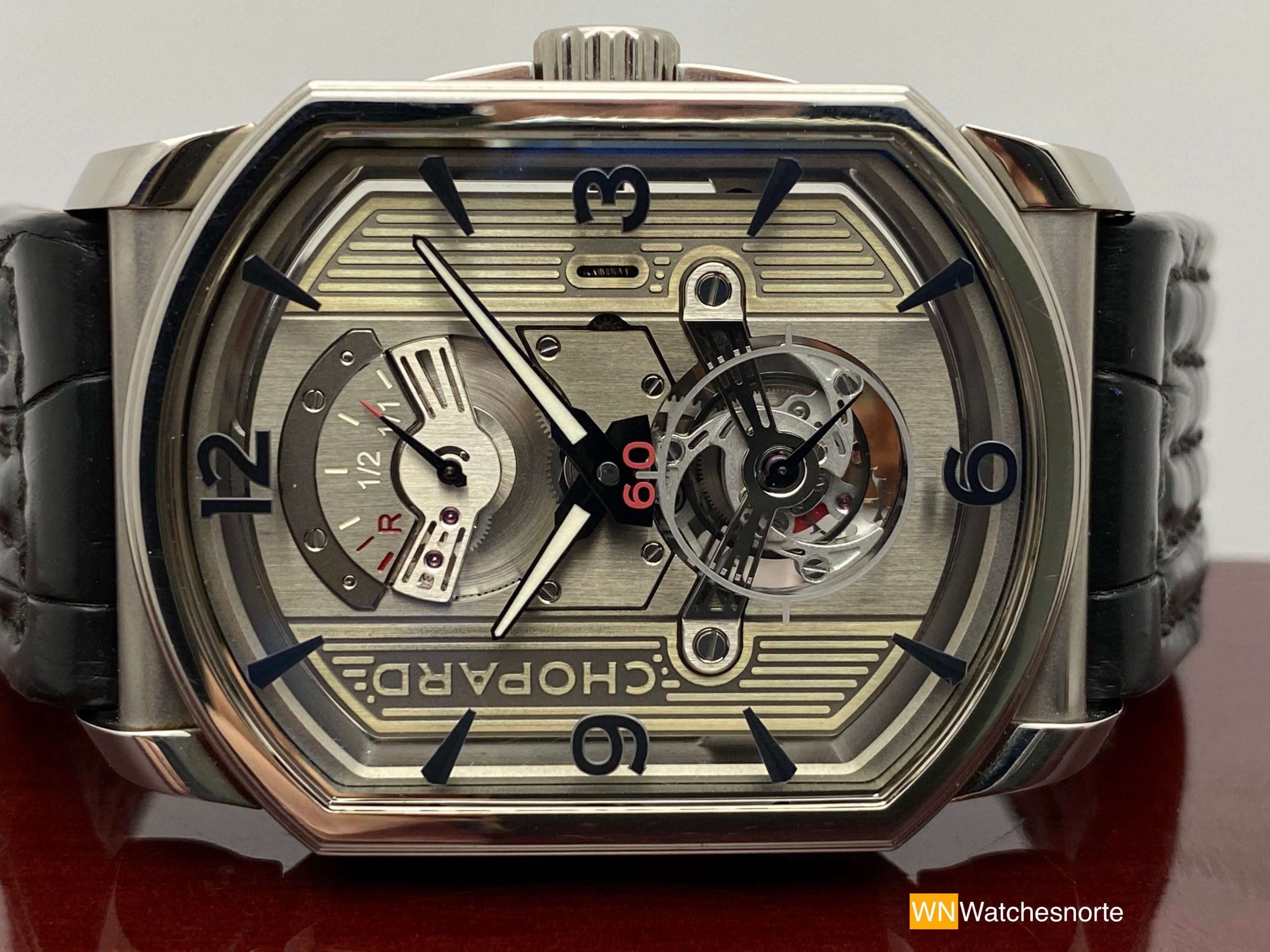There is a very special relationship between the world of motor and high-end watches. Many special editions of watches were inspired by the motor world, especially in competition. Watches designed by and for racing drivers. Watches that share manufacturing materials such as steel, titanium, carbon, etc. And there are many similarities between the machinery of a mechanical watch and the engine of a racing car. Polished steel, precision, performance, unique features that give character and personality to each other.
This results in watches like this Chopard L.U.C. Titanium Engine One Tourbillon that we are going to talk about today. A limited edition of only 150 pieces. 150 watches symbolizing the 150th anniversary of the brand created by Louis-Ulysse Chopard in 1860 (the watch was manufactured in 2010).
Chopard L.U.C. Engine One Tourbillon Titanium Limited Edition of 150 units
Chopard designed this watch to resemble a high-performance engine block. It has a very smart box design. The exterior dimensions make it a 35.4mm wide by 44mm high rectangle, although the bulging ends give the dial a much rounder appearance.
Made entirely of titanium, the watch has polished surfaces on the top and bottom, with satin-finished center sections. It is an incredibly light case, a presence that images simply cannot adequately convey.
The movement doubles as the dial, and has two textured vertical stripes that look like the top of a large-displacement engine. The L.U.C 1TRM movement is manually wound and is made and designed internally by Chopard. It has an indicator that looks like a fuel reserve indicator, which marks the 60 hours of energy reserve available. It is also among a rare breed of COSC stopwatch certified “Tourbillon” movements, making it simply look like a high-performance engine.
But, perhaps you are wondering, what is the Tourbillon?
The Tourbillon (French Whirlwind) is a clockwork movement created in 1795 by the watchmaker Abraham Louis Breguet. It was developed to compensate for the irregular effect that gravity produces on the flywheel and the escapement wheel when the watch remains at rest in the same position for a certain time, especially on pocket watches. It consists of a mechanism that rotates a cage-shaped frame (usually once a minute) on its axis, on which the watch’s steering wheel and exhaust are mounted.
With the rotation of said cage-shaped frame, the effect produced by the force of gravity on the flywheel / exhaust assembly does not always concentrate in the same direction, averaging. This increases the precision of the watch mechanism.
Given the complexity of the mechanism, some brands were not initially able to carry out such a structure, so they were forced to buy the workshops they were already producing for their own products.
Currently, a watch equipped with such a mechanism can be effectively developed only by a few specialized factories.
In 1980 a Tourbillon was first mounted on a wristwatch. Originally conceived as a device to improve precision, Tourbillons are currently included in some high-end modern watches as an exclusive item. The mechanism is usually visible through a window made through the sphere, showing its operation.
You can follow us on social networks on Facebook, Instagramand Twitter.


